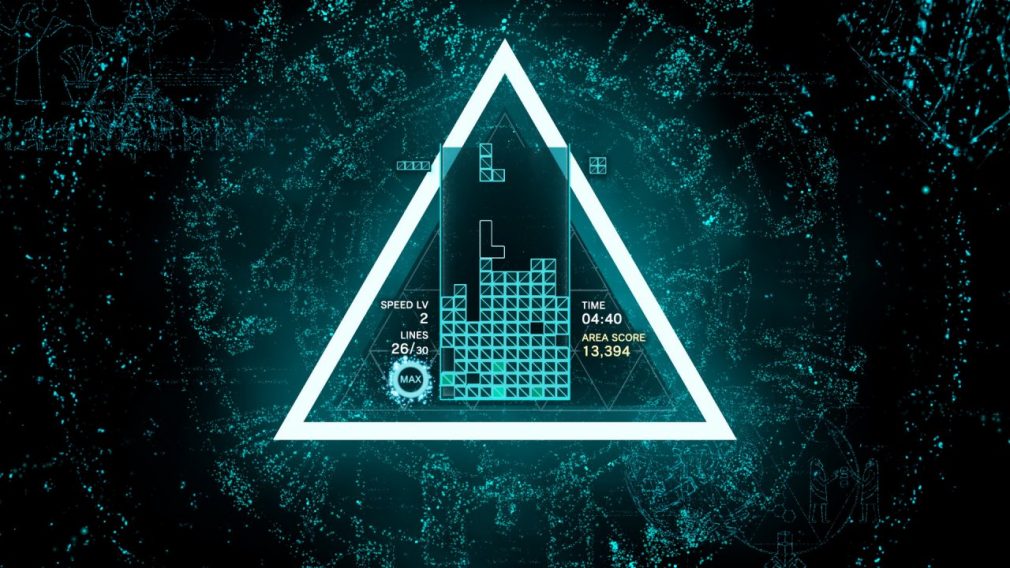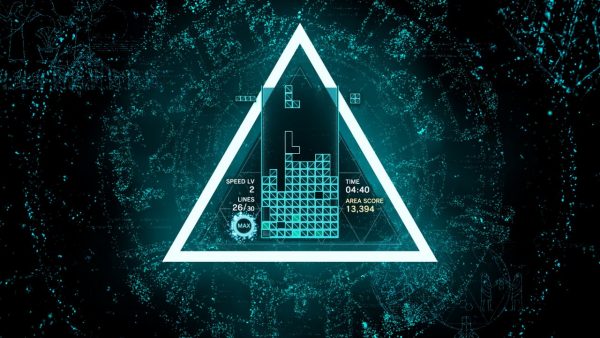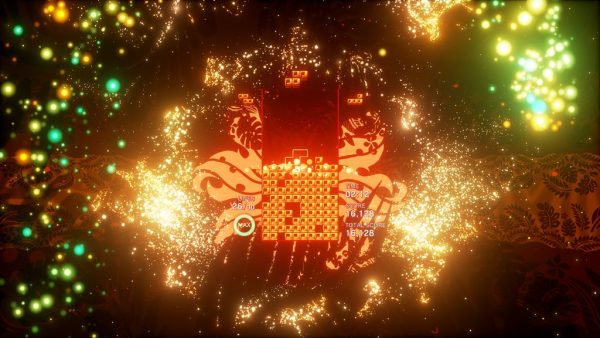Also On: PS4, Switch, Oculus Quest, Xbox Series X, Xbox One
Publisher: Enhance Games
Developer: Monstars Inc., Resonair, Stage Games
Medium: Digital
Players: 1-2
Online: Leaderboards
ESRB: T
Back in 2018, when Tetris Effect launched in its initial form, it received widespread acclaim, awards, and recognition across the board. The core game remains in its entirety as it once was in this re-release, Tetris Effect: Connected. I’m going to try to stick to just talking about the new material introduced in Connected in this article, but if you’re interested in a review of the core game of Tetris Effect, I encourage you to check out our initial review of the game from 2018. You can find that here.
What Tetris Effect: Connected adds with this release is a bundle of multiplayer game modes. When you enter into the all-new multiplayer section, you are greeted with options for Ranked, Friend, or Local matches. The local matches offer you the ability to play any of the multiplayer modes with or against an AI, set to the difficulty of your liking, friend matches (of course) let you set up a private match so that you and a friend or two can play without any random players, and the ranked matches allow you to enter matchmaking for any of the modes.
In my personal opinion, I think that the standout game type available is absolutely the new “Connected” game mode. In this mode, you and two other players (or AI if you so choose) work together to take out an AI boss. The way this plays out is that you each start with your separate playing fields, where you’re placing tetrominoes within a standard-sized arena. As you work together to clear lines, it builds up a hidden meter that when filled slams all three of your playing fields together into a new, single triple-wide arena. You each take turns placing a piece into this new extra-large area to build up as many complete lines as you can within the time limit. Each completed line moves to the bottom of the field to help you maximize what little time you have. The simple flow and smoothness that I saw being achieved within some matches as each player lines their piece up for their turn to slam it down, almost rhythmically can only be described as intensely satisfying. As this combo field time comes to a close, you’ll see all of the complete lines your squad has filled out explode at once, sending a flurry of squares to your AI opponent’s play area. In my experience with Connected, a good group of teammates can nearly fill out the boss’s field in one go, at least with the earlier rounds.
You continue in this fashion, with all the usual pleasant music and laser light show level effects you’re used to from the base game accompanying the now 4 fields of tetrominoes raining down until the boss is vanquished and the game slows down for a moment to show you everyone’s participation, then comes back in for a new and improved boss, slightly harder with new mechanics of its own. As bosses clear lines, you may get new 5-piece tetrominoes for your next few pieces, or possibly all of your currently laid pieces become invisible for 30 seconds, or just perhaps your whole field will get shuffled, leaving that perfect line you were saving on the right side until you got a straight piece totally ruined. But fret not, because you will find yourself soon back into the huge combined field. No matter how jumbled your pieces were or how close to losing you were moments ago, all the pieces gain gravity and slam down to the bottom, giving you and your team a chance to clear everything up for the whole crew.
Connected was where I found myself spending most of my time, and found myself constantly drawn back to, but I did make sure to give a crack at some of the available competitive modes that have been added as well. I went in a little wary, as while I consider myself pretty good at Tetris, I have seen the way other people can play. I was totally ready to get pushed over on the theoretical playground that is Tetris competitive.
The primary competitive game mode in Tetris Effect: Connected is Zone Attack. In this game type, you’re paired up against one other player in a one-on-one battle of attrition. As you clear lines, you will send obstacles to the bottom of your opponent’s field. The more you can clear at one time, the more it’ll raise their playspace. As you clear more lines, it builds up a meter on the side that allows you to enter “Focus mode”. Doing so will make any lines you complete for approximately 30 seconds move to the bottom of your field, comboing up into one big attack. If executed right, you can end up clearing 10+ lines at once, sending a huge wave to your opponent’s field, often to their demise. These battles play out in a best two out of three scenario.
While my first game didn’t go so hot, (I blame the pieces I got to make myself feel better) my fears of continued failure were eliminated as I noticed that the game has a skill rating that gets assigned to you as you play more and it can get a grasp of your personal ability. I was informed of where I placed and it noted that for future games, once you’re ranked, it will try to only place you against people in a similar skill bracket to your own. Once I got to my third matchup, things felt much more balanced and a lot more competitive in my playtime. I think this is necessary for a game like Tetris Effect because of the extreme skill gap that can exist between players in something like this.
The remaining game modes are Score Attack and Score Attack Classic. The two modes are functionally similar, the difference being that Score Attack Classic has some adjusted rules and visuals to be more in line with old-school Tetris. You lose your bank and things are a little tighter in the Classic variant. Score Attack exists as what you’d expect for a standard 1v1 Tetris mode. You and your opponent cannot interfere with each other’s fields like you can in Zone Attack, both just playing along at your standard paces until one of you loses from your own natural cause. Once one player is eliminated, the remaining player gets two minutes to round out their score before the match is officially called to a close.
All in all, I found the new additions introduced in Tetris Effect: Connected to be well worth playing and experiencing. The new Connected mode was an experience with Tetris I’ve never had before and is a must-play for anyone interested in Tetris at all.
Note: Enhance Games provided us with a Tetris Effect: Connected PC (Steam) code for review purposes.




